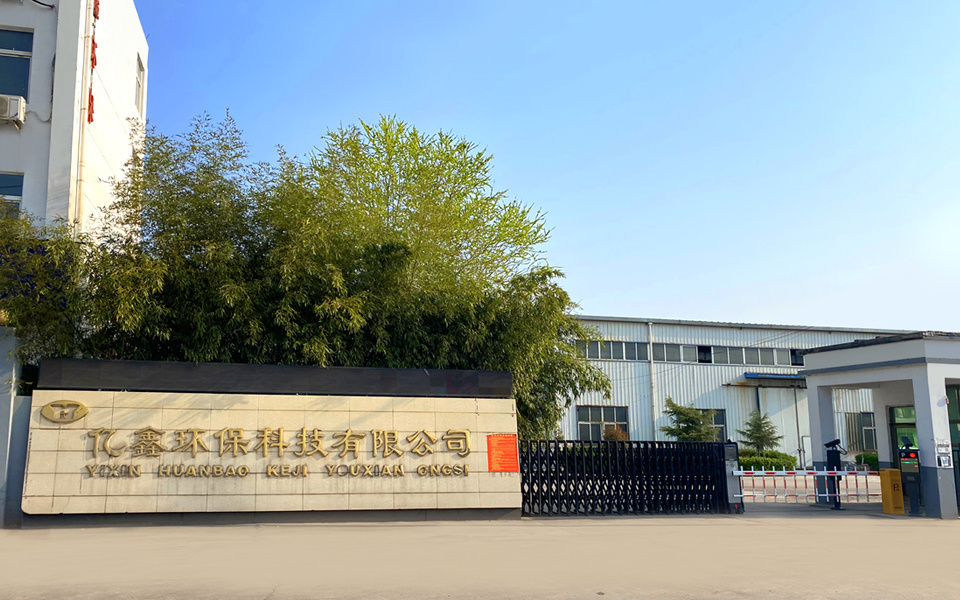Ceramic Multi-Tube Dust Collector
Views:
1000
Category
Product introduction
XLG-Type Ceramic Multi-Tube Dust Collector
I. Overview
The ceramic multi-tube dust collector features an external Q235 steel structure and an internal assembly of multiple parallel ceramic cyclone dust collector units (also called ceramic cyclone bodies). These units, which can be standard ceramic cyclone units or direct-flow cyclone units, are systematically arranged within a single housing, equipped with a shared inlet pipe, outlet pipe, and ash hopper. The collector is divided into two sections: the upper section is the dust removal chamber (where flanges for the flue gas inlet/outlet connect to the boiler exhaust duct and the induced draft fan), and the lower section is the ash collection hopper assembly (including an ash discharge mechanism).
Since the device is composed of ceramic cyclone tubes, it is more wear-resistant than cast iron tubes, with a smoother surface and resistance to acids and alkalis. It is suitable for capturing various non-cohesive dry dust particles. This product is not only used for treating smoke and harmful gases but is also an ideal solution for dust control in industries such as metallurgy, mining, building materials, and chemical engineering.
- Working Principle
When dust-laden gas enters the gas distribution chamber of the ceramic multi-tube dust collector through the main inlet pipe, it flows into the annular gap between the ceramic cyclone body and guide vanes. The guide vanes convert the gas’s linear motion into rotational motion. The majority of the rotating airflow spirals downward along the cyclone body from the cylindrical section toward the conical section.
During rotation, the centrifugal force generated by the gas stream separates dust particles (with higher density than the gas) and throws them against the cyclone wall. Upon contact with the wall, the particles lose inertial force and descend under the combined action of inlet momentum and gravity, eventually falling through the ash discharge port into the main ash hopper.
When the downward-spiraling outer vortex reaches the bottom of the conical section, the tapering geometry forces the cleaned gas to reverse direction and spiral upward along the cyclone axis (as an inner vortex). This purified gas exits through the ceramic cyclone exhaust pipe into the exhaust chamber and is discharged via the main outlet pipe, which can be positioned laterally or atop the system based on requirements.
- Applications & Features
- Suitable for dust control in industrial boilers and thermal power plant boilers of all models and combustion types.
- Effective for treating various industrial dusts, including cement and other valuable recoverable particulates.
- High airflow capacity, strong load adaptability, smooth and durable ceramic cores, compact footprint, and flexible installation (indoor/outdoor).
- Easy management, simple installation, and minimal maintenance requirements.
IV. Operation and Maintenance
1、Pre-Startup Preparations
(1) Check whether all connection points are securely fastened.
(2) Inspect the airtightness of joints between the dust collector, flue ducts, ash hopper, and ash discharge valves.
(3) Partially close the flue gas damper, start the induced draft fan, and gradually open the damper valve after confirming no abnormalities to allow the dust collector to process the specified volume of dust-laden gas.
2、Daily Operation and Maintenance
(1) Conduct regular airtightness inspections and promptly address any air leaks to prevent reduced dust removal efficiency.
(2) During system startup, activate the induced draft fan first; during shutdown, turn off the forced draft fan before stopping the boiler.
(3) Regardless of the cleaning method used, regularly clean the ash hopper to prevent excessive ash accumulation from blocking the discharge port and disrupting operation.
Note: If cyclone tubes become clogged, open the inspection port after system shutdown and clean them using a high-pressure air gun for optimal results.
V. Installation and Precautions
1、Installation Guidelines
(1) Handle with care during transportation and installation to avoid collisions.
(2) During installation, place asbestos rope between all flange connections and tighten bolts securely to prevent air leaks and ensure dust removal efficiency.
- Precautions
(1) The dust collector must be sized according to the boiler’s flue gas flow rate. Overloading or underloading will reduce efficiency.
(2) After installation, bake the unit at temperatures below 120°C for three days (units under 20 tons can be used immediately) to slowly remove residual moisture from construction materials before normal operation.
(3) Assign dedicated personnel to manage the equipment during operation and maintain detailed operation logs.
(4) Operators must understand the dust collector’s principles, performance, operating conditions, and troubleshooting methods.
(5) Regularly measure process parameters (e.g., flue gas flow, temperature, dust concentration) and address anomalies promptly.
(6) During shutdown, turn off the induced draft fan first. Never strike the ash discharge port with metal tools, and regularly check its sealing integrity.
(7) After stopping the process system, keep the dust collector and induced draft fan running for a period to remove residual moisture and dust from the equipment.
Keyword:
Environmental Protection Equipment

Product consultation
Free product brochure available upon providing your contact information.






